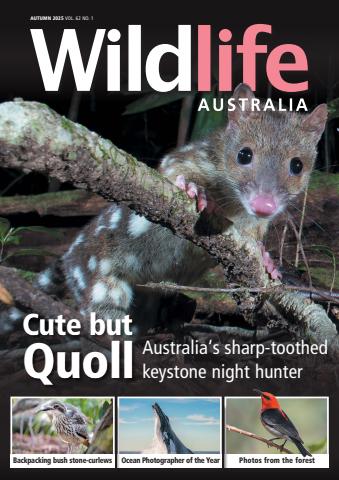
Wildlife Australia | Autumn 2025
WHEN THE Australian Workers Union (AWU) argued that more than 9000 jobs “will go in the hardwood industry if the ‘Great Koala National Park’ is imposed on north coast communities” they had a valid socio-economic point. But it’s a point that misses some naturally valid counterpoints.
The AWU backed up their media statements with 2024 research from the CSIRO showing koala populations were “stable and thriving with 748,000 of the animals in NSW”.
“Hardwood sourced from native forest is already heavily restricted. By law no harvesting occurs in old growth forest, and clear felling is also outlawed. Only a small proportion of trees are harvested and are immediately replanted.”
And then there is the climate change argument: “Timber is quite literally nature’s carbon capture and storage, we should be harnessing it as much as possible while ensuring healthy populations of native species.”
But Australian wildlife needs old-growth trees – especially those with hollows; trees that provide shelter and food – to maintain most of its mammals and birds, particularly nocturnal marsupials.
Koalas only feed on certain types of eucalyptus trees and many are not viable as food sources under 10 years of growth. Koalas move on?
Gliders, for example, usually have many trees they navigate to and from in their areas, often relying upon available hollows. Glide to where?
The Great Koala National Park is only a useful brand name for what is actually a great Australian wildlife national park. Protecting koala habitat helps to protect ecosystems for most of Australia’s unique flora and fauna.
What if hardwood forestry was conditional on the guidance of ecologists, specifically familiar with those areas, for selective harvesting? What sort of wildlife research could also take place?
Perhaps the economic value of the timber industry could win the broader public’s approval, as it genuinely prioritized the invaluable nature of Australian wildlife.
meer lezen
minder lezen
Als abonnee ontvang je de volgende voordelen:
• Een korting op de verkoopprijs van je tijdschrift
• Je tijdschrift elke maand op je apparaat
• Je zult nooit een editie missen
• Je bent beschermd tegen prijsstijgingen die later in het jaar kunnen plaatsvinden
Je ontvangt 4 edities gedurende een periode van 1 jaar Wildlife Australia abonnement op een tijdschrift.
Opmerking: Digitale edities bevatten niet de omslagitems of supplementen die je zou vinden bij gedrukte exemplaren.
Artikelen in deze editie
Hieronder vindt u een selectie van artikelen in Wildlife Australia Autumn 2025.